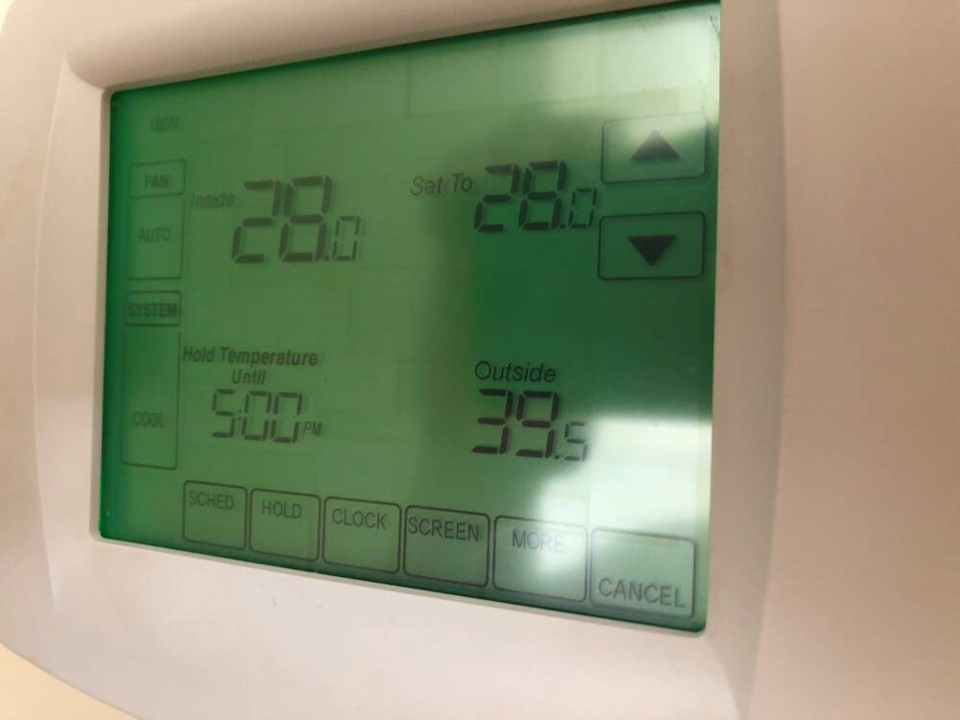The heat dome is long gone but the after-effects are still hovering over the legislature and some government offices where the astounding death toll is still being processed.
The count was updated Monday to 595 people. For reference, it took 10 months from the start of the pandemic for COVID-19 fatalities to reach that level. The heat dome claimed that many in the space of a week or so.
The number of overdose deaths is averaging about 170 a month. So in the space of a few suffocating days, the heat dome killed as many people as overdoses do over the course of about 14 weeks.
“Never again” is the obvious stance, as all the different agencies that had to scramble last summer lay plans to respond better next time.
Chief coroner Lisa Lapointe said the office is gathering as much information as possible about each one of the deaths to “inform future evidence-based prevention efforts.” It will take several more months to complete those reports.
Once they are filed, a death review panel will make recommendations, for release in late spring of 2022.
The findings to date show three-quarters of fatalities were in the Vancouver Coastal and Fraser health areas. Forty-eight were reported on Vancouver Island, 18 in the city of Victoria. Individuals aged 70 or older accounted for 69 per cent of the deaths. There were no heat-related deaths reported among children.
At its peak, the heat wave killed 362 people in just two days, June 28-29. Statistically, that’s the equivalent of more than a year’s traffic fatalities in just 48 hours.
There is one significant data point in the reporting to date that needs to be highlighted by the death review panel. Fully 96 per cent of the heat deaths occurred in a residential setting. That means they died surrounded by neighbours.
That broadens the questions about the slammed ambulance service’s falldowns and municipal governments’ delayed responses to include all of us. A lot of things in modern life work against getting to know the neighbours, but it’s dismaying to think how many deaths might have been averted if people had checked on elderly neighbours.
(My personal review of the heat wave leaves me dismayed at how that was neglected.)
Lapointe referred to that issue on Monday, saying: “Having a plan to check in with loved ones who live alone, being aware of cooler and air-conditioned areas in your neighbourhood and heeding early warnings about extreme weather are simple steps that will help ensure we are all properly prepared and safe.”
Check family members by all means in emergency situations, but checking older neighbours you may not know well is an equally good idea.
Death review panels have been convened in the last several years to examine issues like the opioid crisis, medically-assisted deaths, intimate partner violence and fatal air taxi crashes.
The heat dome deaths have occupied the legislature intermittently since it resumed sitting last month. Opposition Liberals landed on it the second day back and have returned to several times since, questioning the overall government response.
Interest was heighted by Premier John Horgan’s initial response. At a news conference held in the midst of the heat wave to announce lifting some pandemic restrictions, he was questioned about the threat to life the heat was presenting. He impatiently snapped that fatalities are a part of life and was obviously dismissive of the issue. He’s been paying for that stance ever since and later said he was “giddy” about the good news that day.
Although he said at the time the government was not to blame for the deaths, Human Rights Watch, an international group, took notice of his government’s response and rapped it.
The B.C. Centre for Disease Control also did a brief report on the disaster, saying it was a “one in one-thousand years” event, but could become more common with climate change.
Health Minister Adrian Dix relied on the freak nature of the event in subsequent defences of how government responded.
“People acted appropriately, but we need to learn the lessons of this.”
The death panel will likely stress how heavily poor people were hit and recommend counter-measures for next time. But everyone has something to learn from that brutal week.



